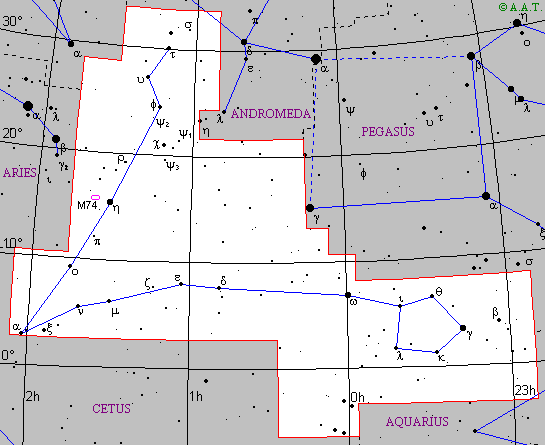 |
 |
| English name | Fishes | ||||
|---|---|---|---|---|---|
| Major stars | No star of the constellation exceeds the magnitude 3,5. | ||||
| Description | Constellation of the zodiac, through which the Sun transits from the middle of March to the end of April. While it is in Pisces, the Sun crosses the heavenly equator from south to north: this point is determined by the intersection of the equator (zero degrees of declination) with the hour zero of right ascension, that is in the southern part of the constellation. It is the spring equinox, which falls on March 21 and anciently was in Aries. Even if it is rather wide, the constellation of Pisces is not very brilliant: its brightest stars are of fourth magnitude. Remarkable are only some double stars, among which alpha, zeta and psi1 Piscium, visible with small telescopes; easier to be separated is rho Piscium, a couple of stars of fifth magnitude, the one yellow and the other orange.
|
||||
| Mythology and history | During the battle of the gods against the Titans, to escape the terrible monster Tepheus the goddess Aphrodites and his son Eros changed into fishes and took refuge in the river Euphrates: and so they were safe. In sky the two fishes are represented while they are swimming the one northwards and the other westwards, with the tails tied up together by a string: the Greeks didn't know the reason for this bond. However also the Arabs adopted such representation, so that they called Alrescha, that is "rope", the star alpha Piscium. |
||||
 Back to constellations page.
Back to constellations page.